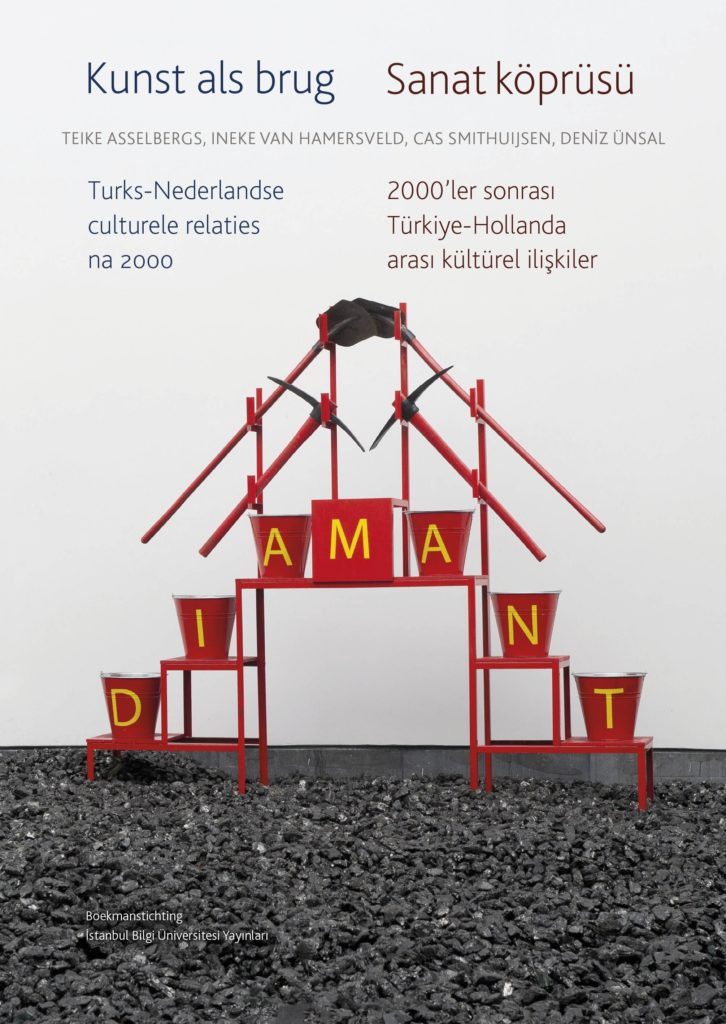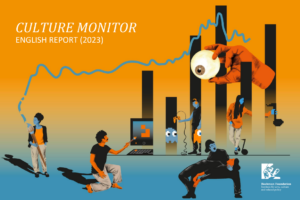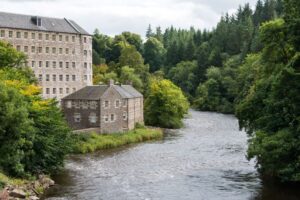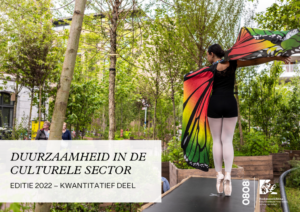Art bridges reveals the results of artistic and cultural activities undertaken by migrants in both countries. The results differ over time. Initially, the Turkish immigrants virtually did not mingle whit Dutch culture. They kept looking eastwards, to their country of origin, and remained primarily oriented toward the community of co-immigrants from Turkey. The orientation gradually changed, mainly through education and, thanks to a better level of education, through an increase of social and economic opportunities.
Kunst als brug 
Turks-Nederlandse culturele relaties na 2000
Sanat köprüsü 
2000ler sonrasında Türkiye Hollanda arasında kültürel ilişkiler
The publication reveals the results of artistic and cultural activities undertaken by migrants in both countries. The results differ over time. Initially, the Turkish immigrants virtually did not mingle whit Dutch culture. They kept looking eastwards, to their country of origin, and remained primarily oriented toward the community of co-immigrants from Turkey. The orientation gradually changed, mainly through education and, thanks to a better level of education, through an increase of social and economic opportunities.
This success is also reflected in artistic and cultural activities. Many Turkish Dutch not only contribute to the development of cultural life in the Netherlands in general, but also through specific actions on an individual basis. Karsu Dönmez,for instance, performs as a singer, plays the piano and composes texts and melodies herself. She mixes Chopin in a natural and convincing way with music from the Black Sea, bringing this extraordinary repertoire to venues all over the world. Thanks to their ‘bicultural’ status, these young Turkish Dutch are able to create unexpected perspectives.
In the same way, Dutch born artists are able to perform in the open artistic climate of the larger cities throughout Turkey, as Maria Sezer experienced. She introduced Kaçak, a work of contemporary sculpture, in the public space of Istanbul. Sezer used elements of wrecked ships dug up during the construction of railway tunnel under the Bosphorus.
In Turkey, local cultural communities are especially interested in the skills and knowledge Dutch artists developed in design and architecture. Meetings with international renowned architects turned out to be very successful for Dutch architects. It shows that aesthetics and logistics of the `Western art world’ fit very well into the oriental profile and traditions of Turkish cultural life.
It also works the other way around: books of Perihan Mağden, Orhan Pamuk, Elif Şafak, Ahmet Tanpınar and others find an interested audience in the Netherlands. The annual festival Turkey now! brings film, theatre, dance and music from Turkey to the Dutch population. Products of Turkish visual artists have become part of Dutch museum collections, like the work of Gülsün Karamustafa and Hüseyin Bahr Alptekin which can be admired in the Van Abbemuseum in Eindhoven. This small selection of successful examples of artistic and cultural exchanges cannot be complete without mentioning, for instance, Hatice Gökce who gave a masterclass for Rotterdam fashion students, which resulted in an impressive cat walk.
Made possible by the Marmara Fonds of the Prins Bernhard Cultuurfonds
 |



